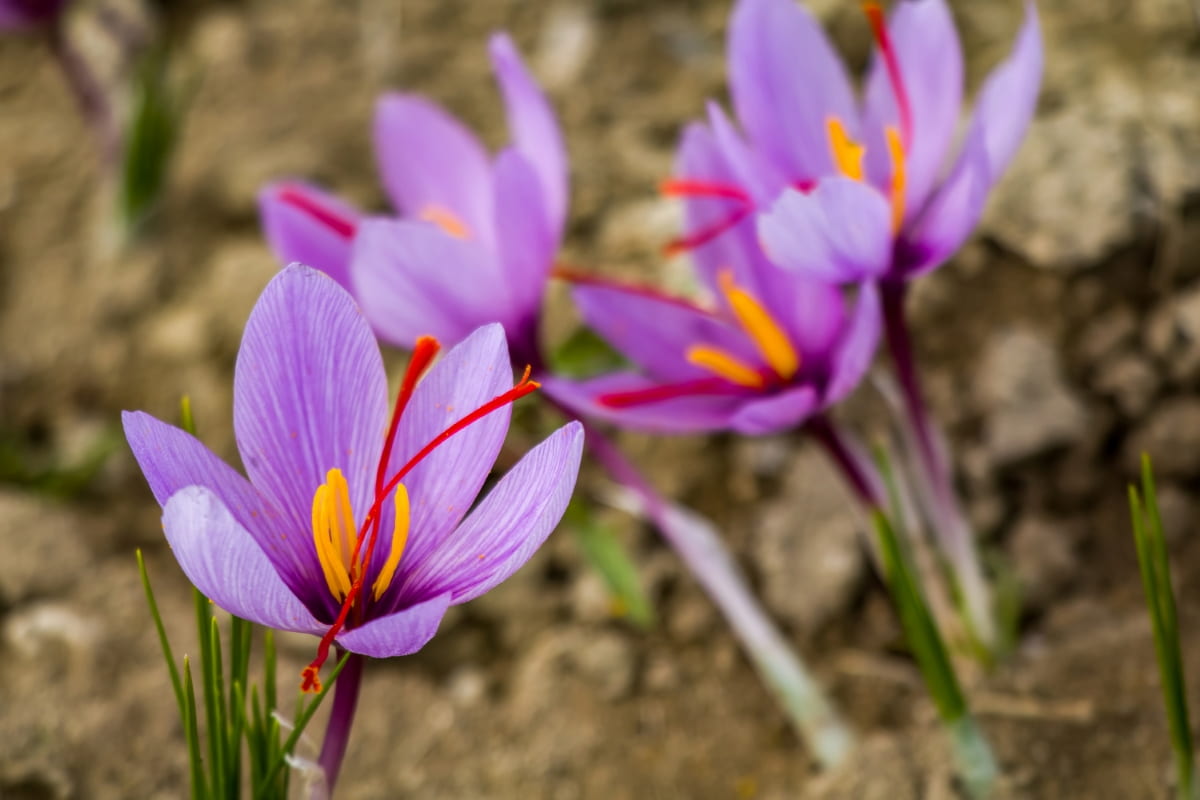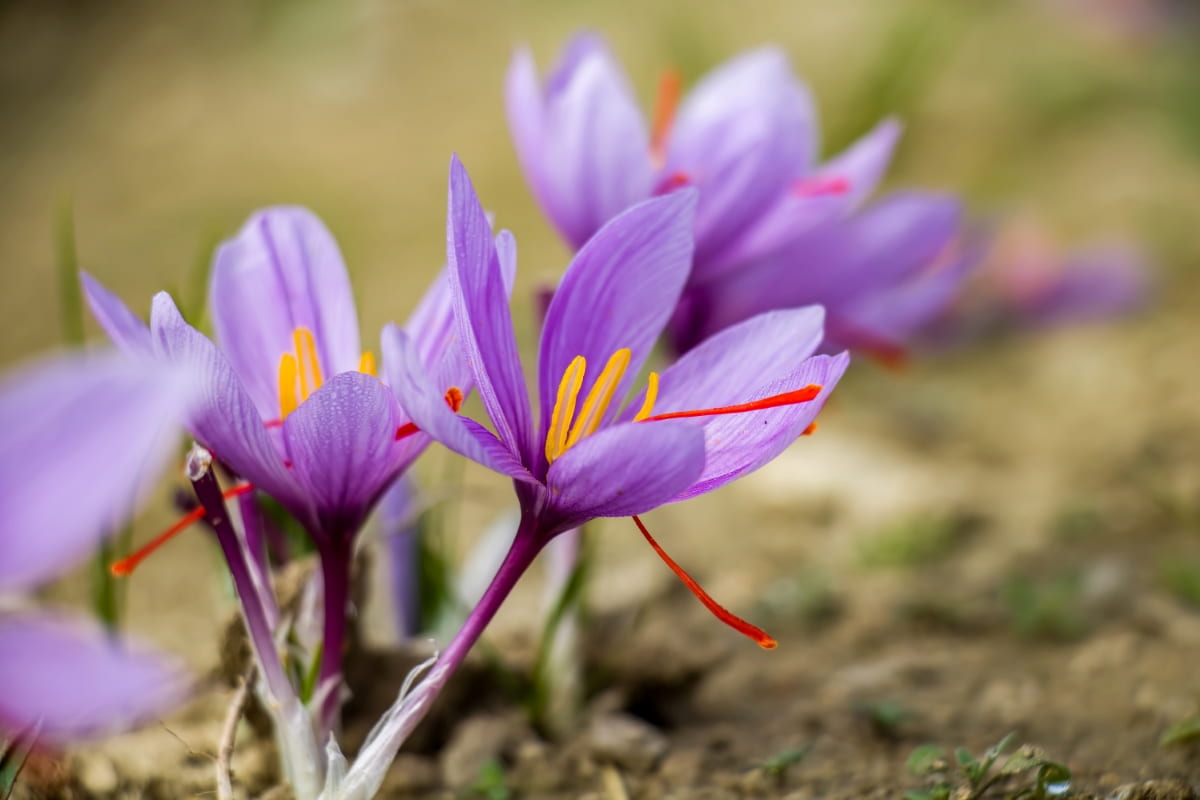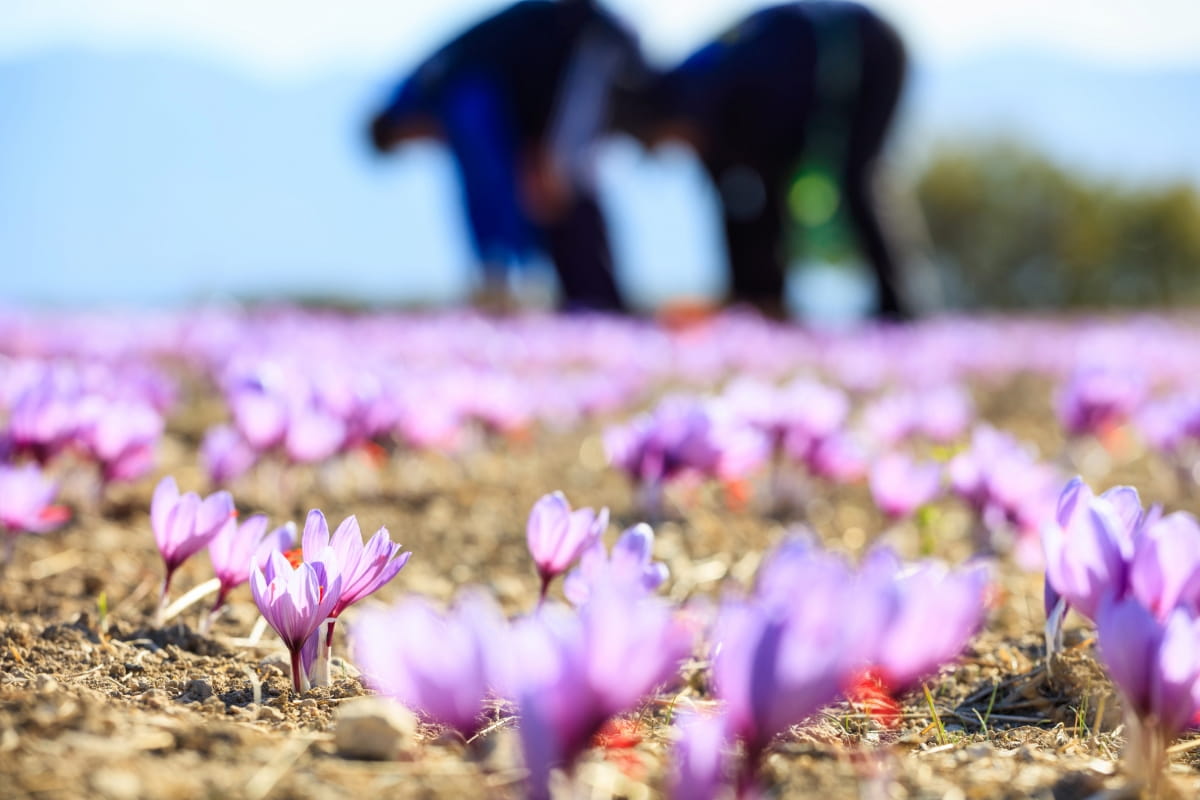Saffron (Crocus sativus L.) is derived from the delicate red stigmas of the Crocus sativus flower. By avoiding common mistakes in Saffron farming, farmers can maximize their yields and profits.

Common Mistakes to Avoid in Saffron Farming
Improper Soil Preparation
The soil quality plays a crucial role in determining the success of your Saffron crop. Saffron bulbs do not thrive in waterlogged or soggy conditions. This can affect root rot and eventually kill off your plants. Therefore, before planting your bulbs, make sure the soil has adequate drainage.
Saffron requires a pH level between 6 and 8 for optimal growth. Be mindful of any potential contaminants in your soil, such as heavy metals or chemical residues from previous land use activities. Conducting a thorough analysis beforehand can help prevent any contamination issues down the line.
Incorrect Planting Depth
It is one of the common mistakes that Saffron farmers should avoid. When planting Saffron bulbs, getting the right depth is crucial for their successful growth and development. One mistake that farmers often make is planting the bulbs too deep in the soil. This can prevent them from receiving proper sunlight and hinder their ability to sprout and grow.
On the other hand, planting them too shallow can expose them to harsh weather environments and make them more susceptible to damage. Farmers should also be mindful of maintaining consistent spacing between each bulb when planting. Crowding can lead to competition for resources among plants, resulting in stunted growth or poor yield.
Inadequate Irrigation
Proper irrigation is crucial for the healthy growth and development of Saffron plants. Insufficient watering can lead to stunted growth, reduced flower production, and ultimately lower yields. Saffron plants require regular and adequate moisture levels throughout their growing season.
Overwatering should also be avoided as it can cause root rot and other diseases. Inadequate irrigation affects not only plant health but also saffron quality and market value. Therefore, proper attention should be given to ensure that Saffron farms have a well-planned and efficient irrigation system in place.
Poor Weed Management
Weeds can be a major nuisance in Saffron farming, competing with the precious spice for essential nutrients and sunlight. It is crucial to implement effective weed management strategies to ensure optimal growth and yield of Saffron flowers. One common mistake that farmers make is neglecting regular weeding practices. It is important to inspect the fields and remove any unwanted vegetation promptly and regularly.
In case you missed it: Saffron Farming in Greenhouses: Benefits, Considerations, and Best Practices

Another mistake is relying solely on manual methods of weed removal. While hand-pulling weeds may seem like a cost-effective option, it can be time-consuming and inefficient in larger farms. Poor management of weeds in Saffron farming can have detrimental effects on crop productivity and quality. Therefore, farmers must prioritize regular inspection, choose appropriate control methods, employ proper mulching techniques, and stay proactive in maintaining a healthy Saffron field free from invasive weeds.
Neglecting Pest and Disease Control
Pests such as aphids, mites, and thrips can cause significant damage to Saffron plants by feeding on their leaves and stems. These pests not only weaken the plants but also transmit various diseases that can further harm the crop. To prevent pest infestations in Saffron, farmers should regularly inspect their Saffron fields for signs of insect activity. Implementing integrated pest management strategies like using natural predators or introducing beneficial insects can help keep these pests under control without relying heavily on chemical pesticides.
By neglecting pest and disease control measures in Saffron farming, farmers not only jeopardize their current season’s harvest but also increase the likelihood of long-term damage to their crops. Therefore, Saffron farmers must prioritize proactive pest and disease management techniques for successful cultivation.
Inaccurate Harvesting Techniques
Unfortunately, many farmers make mistakes when it comes to harvesting their precious spice. These errors can result in lower-quality Saffron and decreased yields. One common mistake is harvesting the Saffron flowers too early or too late. Saffron flowers must be picked at just the right time when they are fully open but before they start to wilt. Harvesting too early means, you’ll miss out on the full flavor and aroma of the spice, while waiting too long can cause the stigmas to become overripe and lose their potency.
Another error is using improper tools for harvesting Saffron. It’s crucial to use sharp scissors or tweezers specifically designed for this purpose. Using dull or inappropriate tools can damage the delicate stigmas, affecting both their appearance and flavor. Avoid these inaccurate harvesting techniques by investing time in learning proper methods through training programs or consulting experienced growers in your region.
Improper Drying and Storage
After harvesting those delicate, vibrant threads, it’s important to handle them with care to preserve their quality and potency. Proper drying techniques are vital for maintaining the flavor, aroma, and color of Saffron. Many farmers make the mistake of rushing this step or using improper methods. To ensure optimal drying, Saffron should be spread out in a single layer in a cool and well-ventilated area away from direct sunlight. Avoiding exposure to these elements prevents oxidation and preserves its unique characteristics.
Lack of Nutrient Management
Saffron requires specific nutrients to grow optimally, and without proper management, the plants may not reach their full potential. One mistake that farmers often make is not conducting soil tests to determine nutrient deficiencies or imbalances. Applying too much fertilizer can affect nutrient imbalances and even damage the plants.
In case you missed it: Best Irrigation Methods for Saffron Crop Growth and High Yield

On the other hand, inadequate fertilization can result in stunted growth and poor flower production. Furthermore, improper timing of fertilizer application can also be detrimental. Saffron plants require different amounts of specific nutrients at different stages of growth.
Ignoring Climate and Environmental Factors
Climate and environmental factors play a crucial role in Saffron farming. However, one common mistake that farmers often make is ignoring these important aspects. By disregarding the specific climatic conditions and environmental requirements of Saffron cultivation, farmers risk compromising the quality and yield of their crops.
Saffron thrives in regions with a Mediterranean climate characterized by hot summers and mild winters. Furthermore, Saffron is highly sensitive to waterlogging, droughts, strong winds, and extreme temperatures. Ignoring these factors can result in root rot or plant dehydration, which will negatively impact the overall health of the crop.
Insufficient Market Research
One of the common mistakes that Saffron farmers make is neglecting market research. While the cultivation process is vital, understanding the demand and market dynamics for Saffron is equally important. Without proper market research, farmers may find themselves in a situation where they have grown an abundance of high-quality Saffron but struggle to sell it. By conducting thorough market research, farmers can identify potential buyers, understand pricing trends, and determine the best marketing strategies. This information can help them plan their production accordingly and ensure a profitable return on investment.
In case you missed it: Soil and Climate Requirements for Saffron Farming

Conclusion
Saffron farming is a highly lucrative and rewarding venture, but it needs careful planning and execution to achieve success. The common mistakes can result in significant losses, both in terms of time and financial investment. This is why it’s crucial to understand the importance of avoiding common mistakes in Saffron farming.
- Feed Your Flock for Less: Top 10 Tips to Save on Chicken Feed
- Ultimate Guide to Ossabaw Island Hog: Breeding, Raising, Diet, and Care
- Hatching Answers: The Top 10 Reasons Your Chickens Aren’t Laying Eggs
- Eggs and Economics: Breaking Down the Cost of Raising Backyard Chickens
- Defend Your Greens: Proven Methods to Keep Iguanas Out of Your Garden
- Ultimate Guide to Cinnamon Queen Chicken: A Comprehensive Guide for Beginners
- Ultimate Guide to California Tan Chicken: Breeding, Raising, Diet, Egg-Production and Care
- Ultimate Guide to Marsh Daisy Chicken: Breeding, Raising, Diet, and Care
- 10 Types of Chicken Farming Businesses You Can Start for Profits